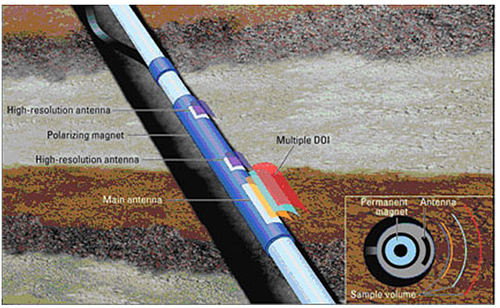
Nuclear logging tools using radioisotopes, Am-241 and Cs-137, are critical for reservoir characterization and related completion and production decisions. Being small, mobile and often used in politically unstable regions, these sources can pose radiological dispersal device (RDD) or so-called ‘dirty bomb’ risks. This concern has been exacerbated by recent stolen/missing source incidents, existence of a black-market on sources, and attempts at their malevolent use. Consequently, in addition to industry effort to develop non-nuclear and nuclear-based alternative logging technologies, governments, international agencies, and national labs are actively assessing measures and technologies to mitigate risks of such sources. The presentation briefly surveys this landscape and then focuses on the state of tested switchable nuclear source-based alternatives, namely:
- D-T neutron generators to replace Am-241 sources in neutron-porosity and mineralogy tools, wireline or LWD, and
- two switchable alternatives to Cs-137 based density, currently the most accurate estimator of porosity.
The Cs-137 alternatives tested include a LINAC X-ray wireline tool successfully tested in the 1980s, but not commercialised, and an interpretation algorithm implemented in an LWD tool to utilise gamma-rays from inelastic interactions of high-energy neutrons from a D-T generator. The latter concept, denoted as inelastic n-gamma density (INGD) or as “sourceless” density (SNGD) by some, was initially developed in the 1990s as a cased-hole density indicator.
To date, petrophysical parameters from these nuclear-based alternatives have not been as accurate as those from radionuclide sources. The talk discusses underlying causes of the inaccuracies, the resulting tool design requirements, and petrophysical interpretation complexities that arise to address them. Novel generators, with the potential to directly replace radionuclide sources, are briefly noted. The talk concludes suggesting a comprehensive industry role in source-risk assessment and mitigation, thereby setting the direction of subsurface logging for years to come.
Ahmed Badruzzaman has spent over 30 years studying downhole nuclear techniques for both characterisation and monitoring during his tenure at Chevron Energy Technology, Sandia National Laboratories, and Schlumberger-Doll Research. He is the Chairman of SPWLA Nuclear Logging SIG, a 2006-2007 Distinguished Lecturer of SPE, and a 2014-2015 and 2002-2003 Distinguished Speaker of SPWLA.
He has been the primary industry discussant on logging source safety challenges and their mitigation. Currently a consultant at Pacific Consultants & Engineers in California, he provides consultation to the US Department of Energy on these topics, and is the Technical Lead of their 2015 Scoping Study on potential alternatives to radionuclide logging sources. He developed a graduate course on nuclear logging at University of California, Berkeley and offered it in 2001-2009. He was an official reviewer of the 2008 U.S. National Academy of Science report to Congress, Radiation Source Use and Replacement. During 2011-2012, he was a consultant to the International Atomic Energy Agency on their draft source safety guide, Radiation Protection and Safety in Well Logging, currently under review for international deployment.

